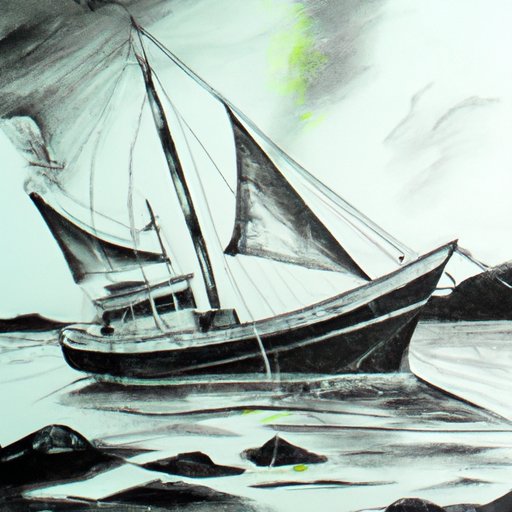
I. Introduction
As someone who feels a deep passion for art, I know firsthand how challenging it can be to master the techniques needed to draw landscapes. Many people find themselves struggling with the basic concepts and become discouraged before they can even complete their first drawing. With this article, I hope to provide a step-by-step guide and offer useful tips and tricks to help learners of all levels successfully draw and appreciate the beauty of landscapes.
II. Step-by-Step Guide
Before we can get started on the details of our landscape drawing, it is essential to start with the basics. Begin by sketching out the shapes you see and give them form and proportion. Spend some time studying the elements of line, form, and perspective.
As you progress in the drawing, start adding finer details, such as trees, foliage, mountains, or water bodies. Be sure to take your time and pay attention to the small things, such as the texture and gradient of the grass or the bark on a tree.
When it comes to shadowing, use your imagination and create the patterns you think would look best on your landscape. Use the shadows to add depth and interest to your drawing.
III. Tips and Tricks
One of the most crucial aspects of drawing landscapes is the composition. The principles of composition help create interest and balance and ensure that everything flows together beautifully.
Color plays a critical role in the mood and feel of your work. Consider experimenting with different shades and tones to capture the essence of the landscape.
The use of different types of strokes can also be incredibly helpful in creating a unique style for your drawing. Don’t be afraid to use cross-hatching or stippling to create different patterns and textures on your masterpiece.
IV. Using References
It is nearly impossible to draw a perfect landscape without some type of reference. Consider using photographs, videos, or even a live landscape setting as a basis for your drawing.
Take your time to observe and capture the various features of the landscape you are attempting to create. Pay attention to the details—study the landscape and focus on one element at a time.
V. Experimenting with Techniques
One of the best things about drawing is that there’s no right or wrong way to do it. Use different media and tools to experiment with various effects and styles.
Try different types of pencils, pens, or pastels to see how each can create different effects and techniques. Once you have an idea of how each medium works, try combining them to create a style that suits your preferences.
VI. Creating Mood
Landscapes can evoke feelings and emotions from those who view them, and as an artist, you can use this to your advantage.
Use color, lighting, composition, and contrast to create different moods that make your piece unique. By changing specific elements of your drawing, you can create different effects, so don’t be afraid to experiment until you find what works best for you.
VII. Mistakes to Avoid
As with any art form, there are common mistakes to avoid in drawing landscapes. Do not overwork a specific area, as this can lead to a loss of tonal range within the drawing. Pay attention to the composition, perspective, and proportions of each element to avoid creating an awkward or misplaced scene.
If you find that you have made a mistake, don’t worry; this is part of the learning process. Use the error as an opportunity to learn and grow as an artist.
VIII. Conclusion
In conclusion, drawing landscapes can be a challenging but rewarding experience. Like with anything, patience and practice are key. Remember to start with the basics, pay attention to the composition and details, and experiment with different media and techniques. Avoid common mistakes and use references as a starting point or for inspiration.
Most importantly, take your time and enjoy the process. Even if you make a mistake, try to learn from it and continue growing as an artist. The world is full of incredible landscapes to explore, so go out there with your sketchbook and pencils and see where your imagination takes you.




